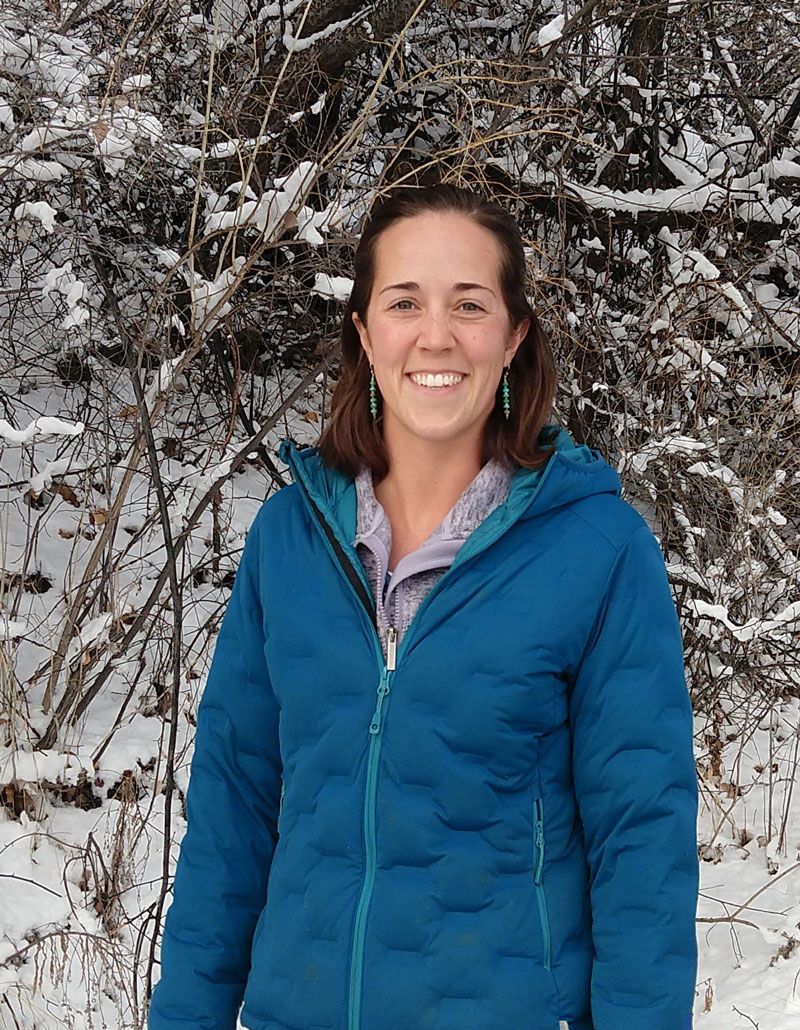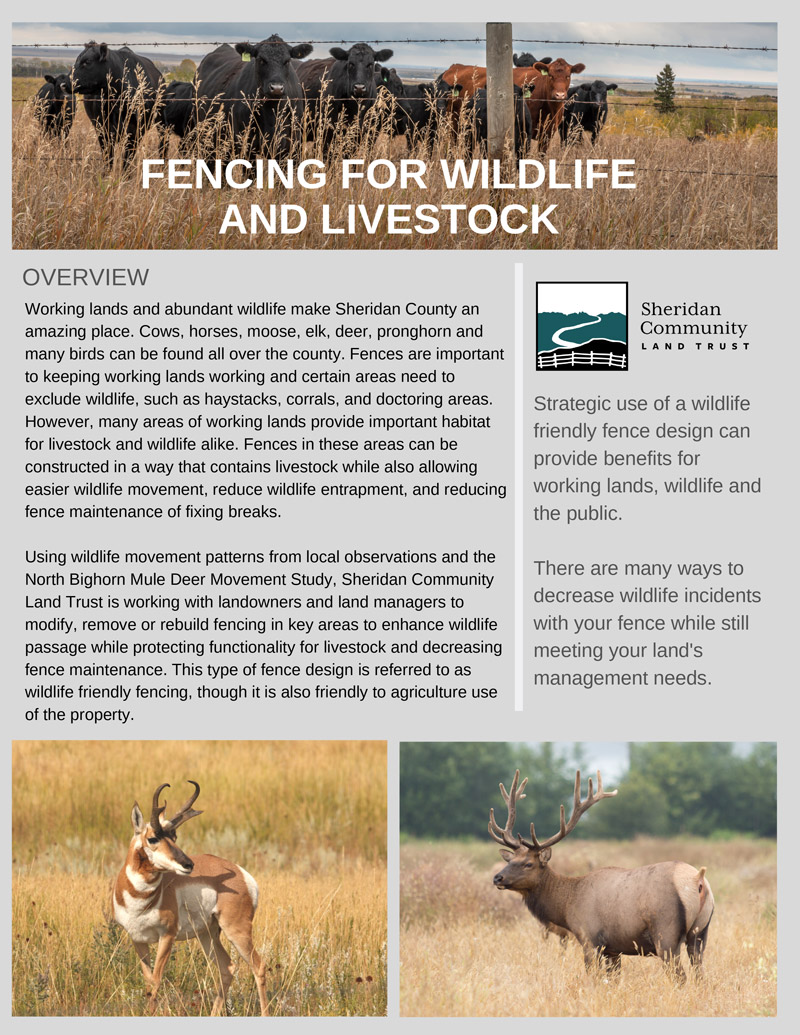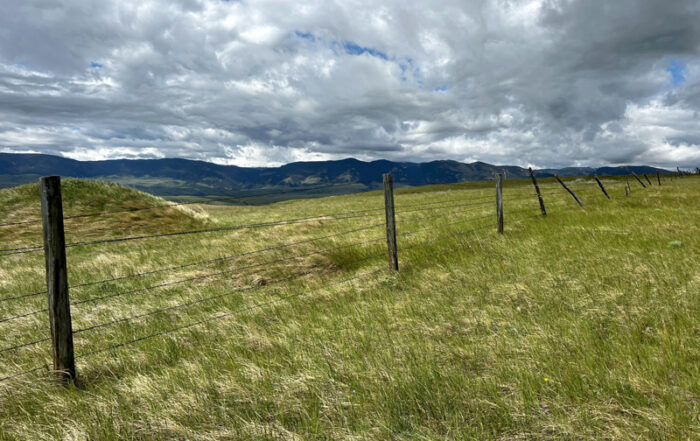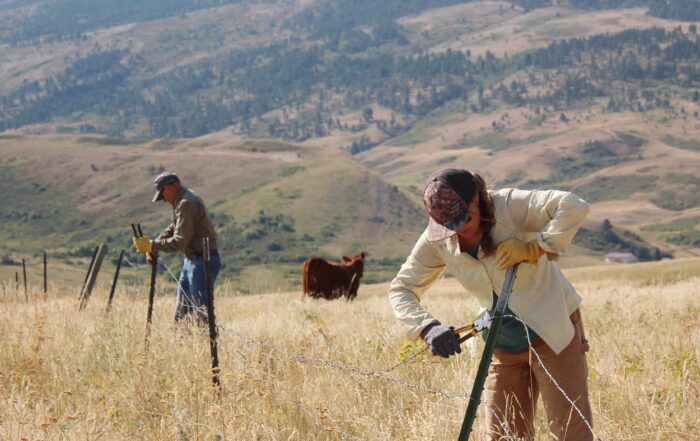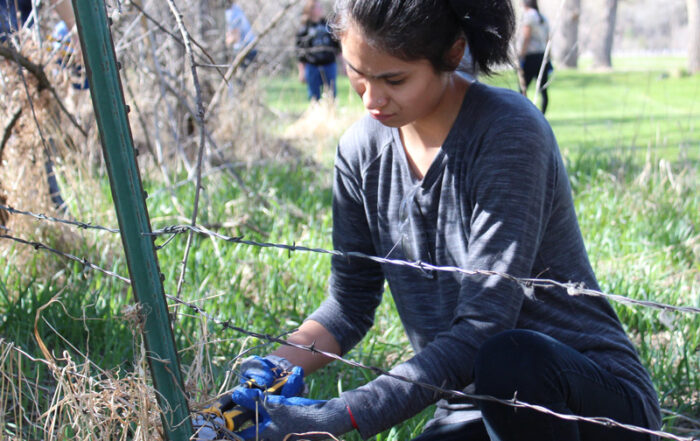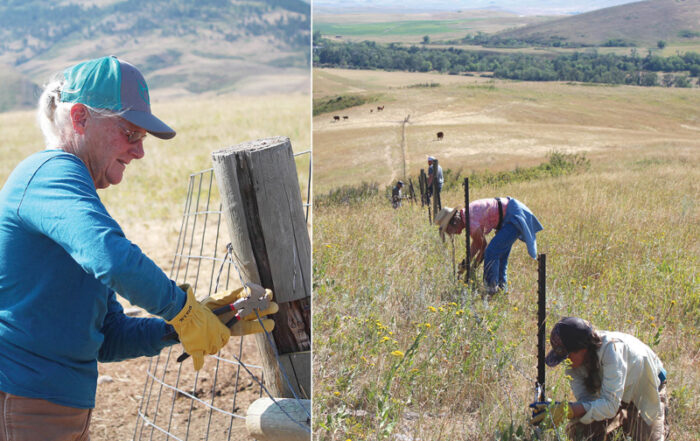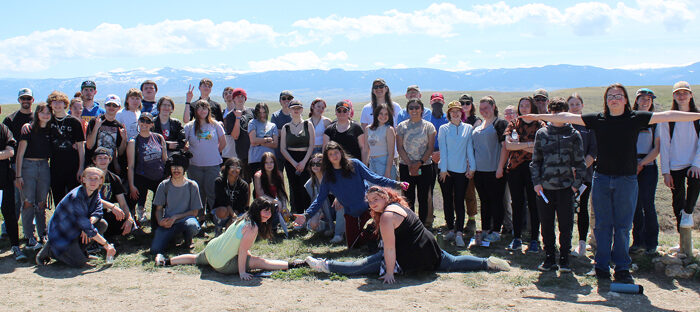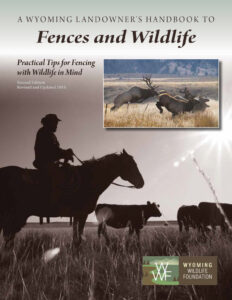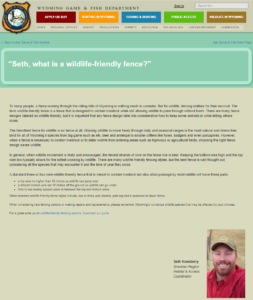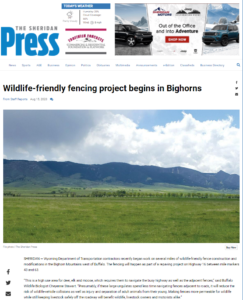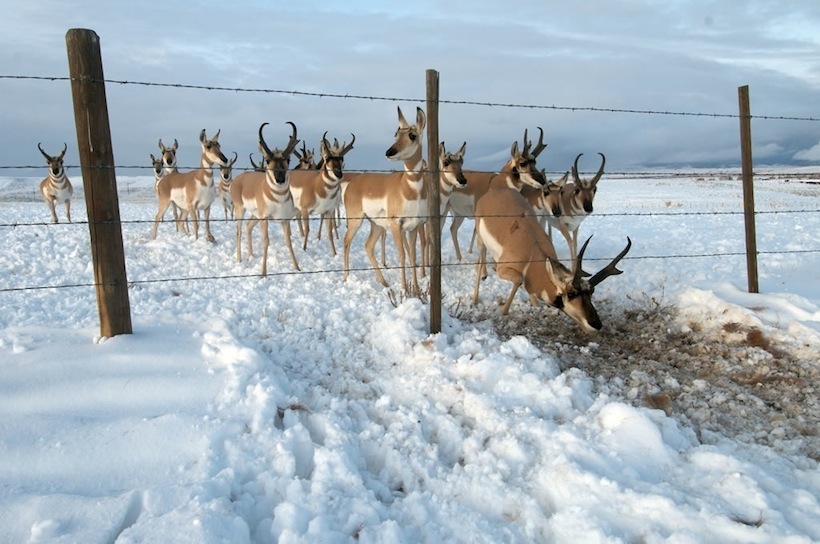
For Landowners, for Wildlife
Fencing is vital for working lands, for marking boundaries, and for protecting resources. But when wildlife and fences collide, the effect is detrimental for both wildlife populations and landowners. By using data from the Northern Bighorns Mule Deer Study and by working with landowners, volunteers and wildlife organizations, SCLT can improve wildlife movement while protecting livestock functionality of fences in Sheridan County.
Why Wildlife Friendly Fencing?

We can’t imagine a landscape without fences. We need fences to mark boundaries, contain livestock, and protect resources. At the same time, fences can pose a threat to the wildlife who share the landscape. It is estimated that there is 1 death per 2.5 miles of fence due to entanglement annually. Entanglement isn’t just bad for the animal, but it makes more work for the landowner too.
It’s not just entanglement that poses a threat to wildlife- if a mother can jump a fence but her young cannot crawl under, the young may be abandoned and die. Fence crossings are yet another stress for wildlife that can increase mortality. By considering wildlife in fence design, we can reduce these impacts while still achieving the fence’s original purpose- whether that be marking a boundary or containing livestock.
How Can I Help Wildlife Move More Easily?
SCLT works with landowners, volunteers and other organizations to increase wildlife friendly fencing in Sheridan County. Keep an eye out for volunteer fence removal and modification days.
Additionally, SCLT helps landowners explore how wildlife friendly fencing can work for their unique operation. While there are some guidelines for wildlife friendly fencing, it is not ‘one size fits all’. Depending on the operation, some wildlife friendly fence designs may work better than others. We are working to increase knowledge about these options.
Watch Videos About How Friendly Fence Helps Wildlife
Wildlife Friendly Fence Project at Bridges West with John C Schiffer Collaborative School
Students & staff from the John C. Schiffer Collaborative School help SCLT remove unneeded fence and invasive Russian olives at the Bridges West campus along Big Goose Creek outside Sheridan. The project helps make the property more friendly for wildlife.
“All This Can Coexist” — Mule deer migration on the edge of Greater Yellowstone
The historic Pitchfork Ranch on the edge of Greater Yellowstone is winter home to migrating elk and mule deer. With deer numbers down, rancher Lenox Baker and Wyoming Game and Fish biologist Bart Kroger discuss how migration research and wildlife-friendly fencing can help deer bounce back.
Learn More with Recent Posts About Friendly Fencing & Wildlife
Help Wildlife at Two Volunteer Events this June
Volunteer Day: Wet Meadow Restoration at Sixmile Creek Wet meadows are critical homes for many well-known gamebirds like grouse, pheasants, and chukars, as well as less well-known birds like Long-billed curlews and Short-eared owls. At [...]
Rebecca Ash works to create ‘on-the-ground projects with real benefits” as SCLT’s Conservation Intern
Creating a sustainable, resilient range is at the top of the list for anyone involved with ranching and agriculture in the Mountain West. For the next six months, Rebecca Ash will be helping local families [...]
Help Sheridan County wildlife at two volunteer fence removal events
You can help wildlife in Sheridan County by joining Sheridan Community Land Trust by volunteering at a pair of fence removal events. The first opportunity is set for Wednesday, May 24, at Sheridan College. Volunteers [...]
Helping mule deer in the northern Bighorns
In early spring, SCLT staffers were on a shed hunt in the high foothills just beyond Big Goose Canyon. However antlers weren’t this hunt’s quarry. The prize? Three GPS collars that had dropped from [...]
Volunteers help wildlife move more easily thanks to successes of four friendly fencing projects
The summer sun was shining bright in the foothills along Pass Creek on a Saturday morning in late August as a group of volunteers worked to swiftly strip nearly three-quarters of a mile of barbed-fence [...]
Don’t fence me in: Schiffer School students help make Bridges West more friendly for wildlife
Students and staff of the John C. Schiffer Collaborative School must have had Cole Porter on their mind in early May as they turned strand after strand of barbed wire loose under western skies – [...]
Other Friendly Fencing Resources
Questions?
Contact Us Today:
